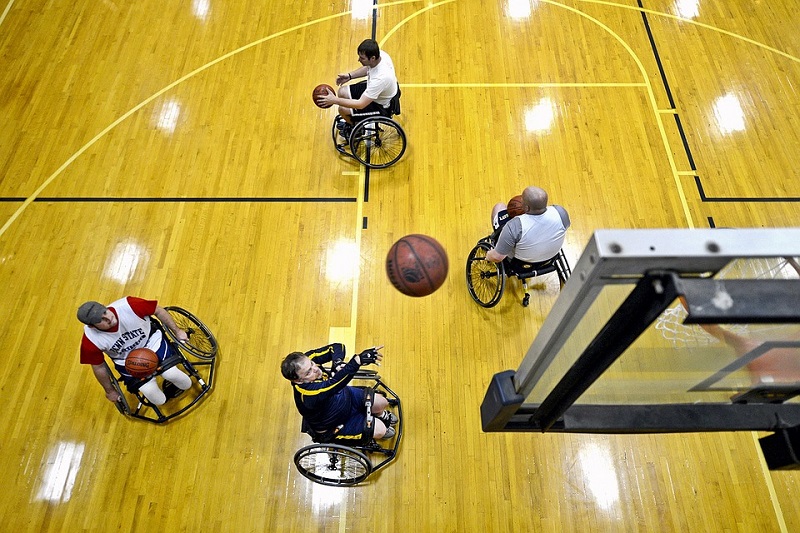Note that your final mark will not be saved in the system.
1.1–1.3 Barriers to user groups (people with disabilities) GapFill
You must fill all the gaps before clicking ‘Check Answers!’

When considering disability, it is important to appreciate the wide range of impairments that it covers. Under the Equality Act (2010), you're defined as disabled if you have 'a physical or mental impairment that has a "substantial" and "long-term" negative effect on your ability to do normal activities’. In the 2019/20 Family Resources Survey, just over one in five people in the UK reported having a disability. This means that approximately 14.1 million people may encounter barriers which affect their participation in sport and physical activity. Individuals with disabilities are twice as likely as non-disabled individuals to be inactive. Let’s discover some of the barriers faced by those with disabilities.
A lot of people with a physical disability rely on the assistance of a or other assistive devices, e.g. walking frames, to get from one place to another. This may cause challenges in gaining access to some facilities as there may not be or lifts available.
Some facilities may lack specialised equipment (e.g. ) to enable disabled people to participate in sports and physical activity. A common barrier is a lack of activity , such as adapted sports (e.g. boccia, wheelchair basketball and blind football). This may be linked to the previous point of not having specialised equipment and/or facilities available to provide these sports. Without the availability of adapted versions of sports and equipment (e.g. the addition of the in blind football), the opportunities for participation for people with disabilities, such as those with visual impairments, are limited. Additionally, some disabilities, e.g. learning difficulties, may require specialist who have specifically been trained to work with these individuals. If there are few available in the local area, then sporting opportunities for people with certain disabilities are limited. Other accessibility features such as for visually impaired and hearing loops for those who are deaf are needed to overcome barriers for people with these disabilities. It is important to be able to cater for the wide range of disabilities there are in society; the to suit different groups of people and their needs is one way of helping to overcome this barrier.
The knock-on effect of lower participation rates at grassroots level is that there are very few disabled sportspeople at a professional level. This limits the number of who would otherwise be promoting disabled sports participation and backing initiatives to overcome barriers. There is also very little of disabled sport, limiting the awareness of the types of adapted activity provision and opportunities for disabled people to get involved. This lack of awareness of disability sports can also lead to misconceptions and stereotypes about individuals with disabilities. These inappropriate attitudes can be barriers in themselves.
Finally, people with disabilities may also face lower disposable , due to their inability to work or get a job. Therefore, they may find participating in sports too expensive as they may not be able to fund the equipment or fees to take part.